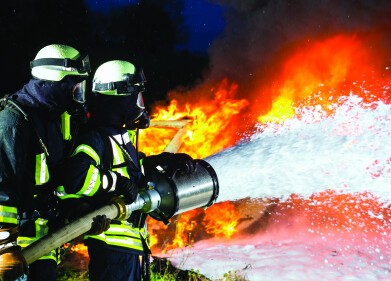-
 Obese individuals are more at risk from respiratory illnesses as a result of air pollution
Obese individuals are more at risk from respiratory illnesses as a result of air pollution
Health & Safety
Obesity 'increases risk of air pollution-related illness'
Feb 13 2014
Air pollution has been linked to issues with human health for a long time. Airborne pollutants have been tied to a number of illnesses, including cancer, heart disease and respiratory problems. However, new research has suggested it is not only the level of pollution you are subjected to that can result in it having a worse effect. Scientists have suggested that body weight could be a factor when it comes to air pollution-induced respiratory illness.
Researchers from the School of Public Health at the Universite de Montreal, Canada, whose study is published in the journal 'Risk Analysis', looked at how obese or overweight people could be more affected by air pollution in terms or respiratory illnesses.
Led by Dr Pierre Brochu, the researchers looked at data from 1,096 study participants who were aged between five and 96-years-old. Each of the participants was classed as being overweight or obese. The data was compared with information from 902 participants who were classed as having a normal, healthy weight.
Each of the participants' urine samples were analysed in order to measure their rates of inhalation. Researchers measured the disappearance rates of heavy oxygen and deuterium, which are ingested tracers. These tracers were then used to measure how much carbon dioxide was inhaled by each of the participants when in real life situations and within their normal everyday environment. These measurements were taken for 24 hours a day for a period measuring between seven and 21 days.
It was found that adults classed as overweight or obese inhale between seven and 50 per cent more each day, when compared to adults of normal or healthy weight. Overweight or obese children breathed in between ten and 24 per cent more air each day.
Participants that had a BMI measuring between 35 and 40 inhaled the most amount of air, measuring at 24.6 cubic metres every day, whereas normal weight adults only breathed in 16.4 cubic metres. This means they are breathing in around 50 per cent more airborne pollutants, heightening their chances of developing air pollution-induced respiratory illnesses.
Obese or overweight children are most at risk, according to the researchers, as they have a higher metabolism in relation to body weight, meaning they breathe more air than adults, thus increasing their chances of developing health complications as a result of air pollution.
Digital Edition
IET 34.2 March 2024
April 2024
Gas Detection - Biogas batch fermentation system for laboratory use with automatic gas analysis in real time Water/Wastewater - Upcycling sensors for sustainable nature management - Prist...
View all digital editions
Events
Apr 30 2024 Melbourne, Australia
Apr 30 2024 Birmingham, UK
May 03 2024 Seoul, South Korea
May 05 2024 Seville, Spain
May 06 2024 Minneapolis, MN, USA

















